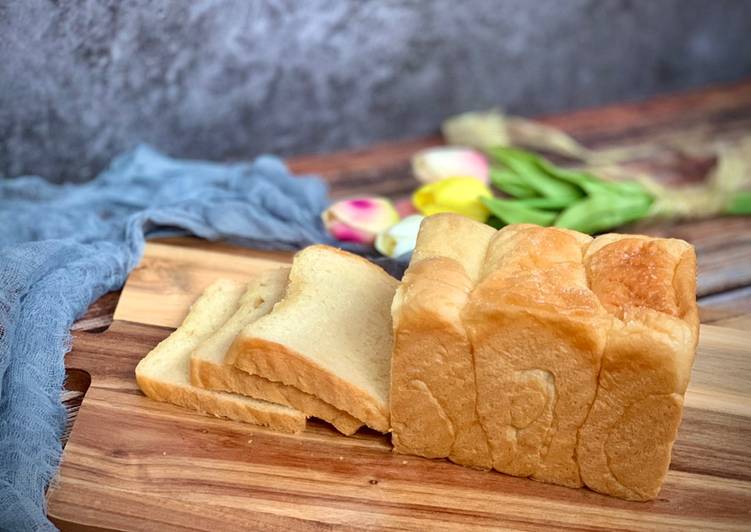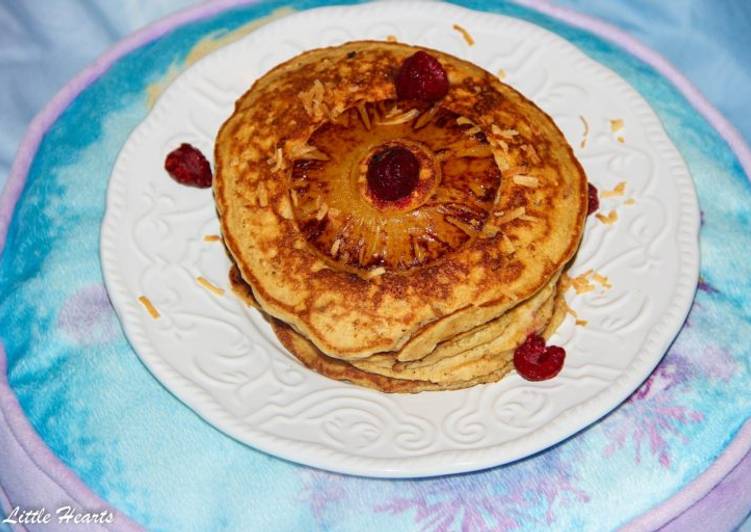
Hey everyone, it’s me again, Dan, welcome to our recipe site. Today, we’re going to make a special dish, japanese super soft bread (using heavy cream). One of my favorites food recipes. This time, I will make it a bit tasty. This is gonna smell and look delicious.
Japanese Super Soft Bread (using heavy cream) is one of the most well liked of recent trending foods on earth. It’s enjoyed by millions daily. It is easy, it’s fast, it tastes yummy. They are nice and they look wonderful. Japanese Super Soft Bread (using heavy cream) is something which I’ve loved my whole life.
Great recipe for Japanese Super Soft Bread (using heavy cream). Had a leftover heavy cream in the fridge so I tried this recipe and wow, it was super nice. A very soft and fluffy bread, tastes delicious too. My sons asked me to bake another loaf just after we finished.
To begin with this particular recipe, we have to first prepare a few ingredients. You can cook japanese super soft bread (using heavy cream) using 9 ingredients and 9 steps. Here is how you can achieve that.
The ingredients needed to make Japanese Super Soft Bread (using heavy cream):
- Prepare 250 gr bread flour
- Prepare 20 gram sugar
- Take 20 gram honey
- Get 4 gram salt
- Take 3 gram instant yeast
- Get 80 gram heavy cream (fat content at least 35%)
- Take 70 gram full cream milk/fresh milk
- Make ready 60 gram water
- Prepare 20 gram unsalted butter (softened)
Photo by Joy on Flickr Hokkaido milk bread is very well-known globally. Outside Japan, this bread has gained a huge following. Classic Japanese Milk Bread recipe made with cream, milk, and an extra special something that makes it super soft, fluffy, and moist. Stays fresh for days longer than regular bread.
Instructions to make Japanese Super Soft Bread (using heavy cream):
- Mix all ingredients together except butter. I used stand mixer, using the dough hook until well combined
- Add in the butter and continue to mix (low speed) until the dough comes together and won’t stick to the wall of the bowl
- Do the window pane stage test, when the dough is elastic and can be spread thinly without tearing/breaking. Dough also won’t stick to you hands
- Once ready, put the dough in the bowl, cover with cling wrap/kitchen towel and let the dough rise until double in size (about 1 hour)
- After the dough double in size, punch down the dough to release the air. Divide the dough into 4 equal sizes. Form each portion to a ball and rest the dough again for another 25 minutes
- Layer the bread tin with cooking oil. After resting the dough for 25 minutes, flatten each dough using rolling pin, and shape it like a small log. Repeat for all 4 doughs. Let it rise for another 1 hour for 2nd proofing. No need to cover the tin first.
- Cover the loaf tin. Preheat the oven to 190 celcius degree. Bake 15 minutes in 180 celcius degree, continue with another 15 minutes in 160 celcius degree or until the bread turn golden brown.
- Remove the bread from the oven Brush the top of the bread with butter. Take it out from the loaf tin and let it cool on the rack completely before slicing.
- Note: I used the rectangular tin with cover. Size: 450g loaf pan (21.3 X 12.2 X 11.5 cm / 8.4"X 4.8" X 4.5") (silver colour in the photos but using loaf tin without cover is fine too. But probably you need to use 2 loaf tins). You need to double the recipe to get a perfect rectangular shape bread.
Classic Japanese Milk Bread recipe made with cream, milk, and an extra special something that makes it super soft, fluffy, and moist. Stays fresh for days longer than regular bread. Follow this step-by-step tutorial to make the fluffiest, yummiest bread ever! Japanese Milk Bread (Hokkaido Bread or Shokupan). Milk bread is a cotton soft, sweet and fluffy Japanese-style bread made famous by bakeries in Japan.
So that is going to wrap it up for this exceptional food japanese super soft bread (using heavy cream) recipe. Thank you very much for reading. I’m confident you will make this at home. There’s gonna be more interesting food at home recipes coming up. Remember to bookmark this page in your browser, and share it to your family, colleague and friends. Thank you for reading. Go on get cooking!

